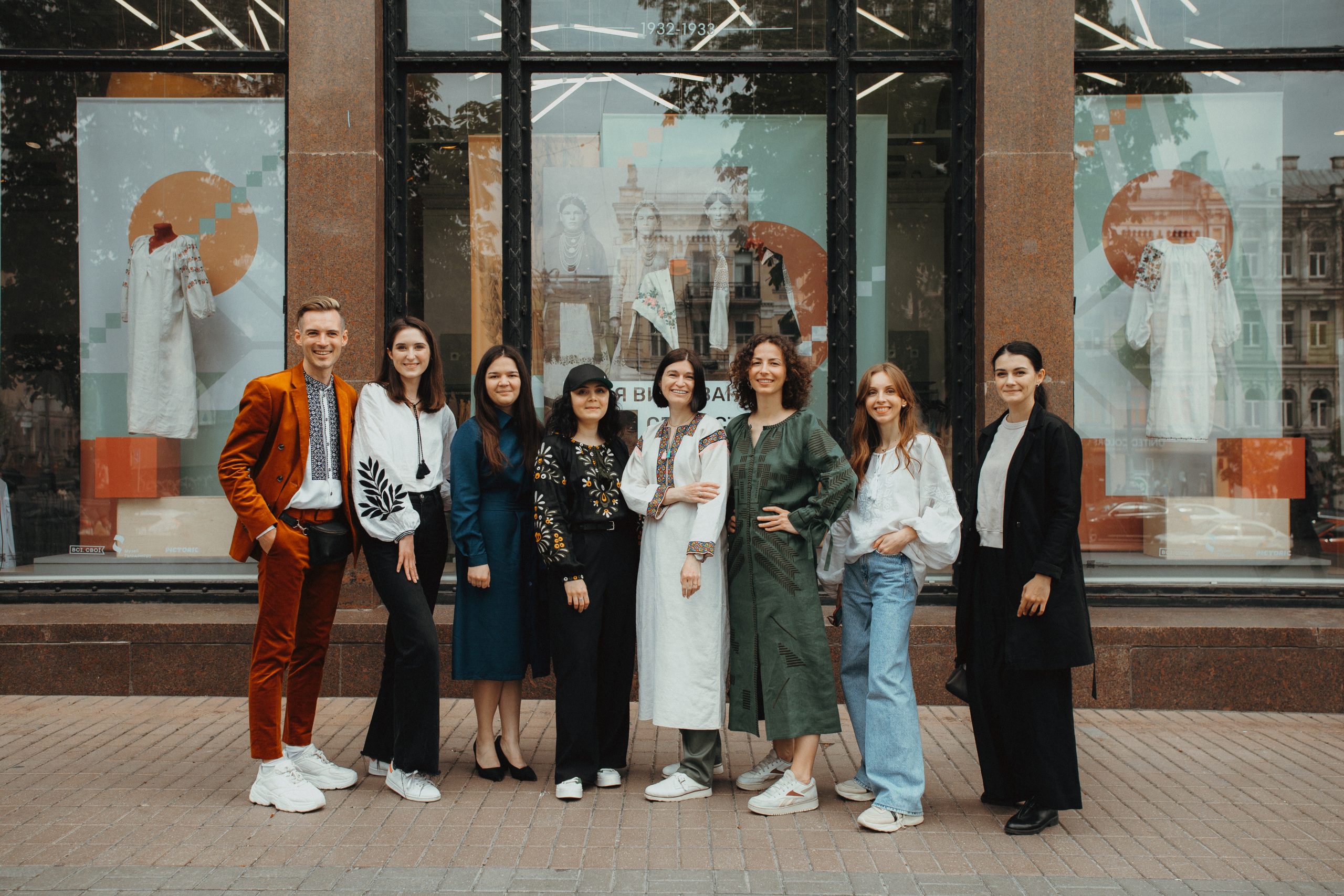My vyshyvanka – my history and Holodomor Museum x Vsi.Svoi х Pictoric
“My Vyshyvanka. My History” is a joint project of the National Museum of the Holodomor Genocide, the largest platform of Ukrainian brands Vsi.Svoi and club of Ukrainian illustrators Pictoric.
For the Day of Museums and the Day of Embroidery, we show the longevity of Ukrainian embroidery from the past to the present, showcasing authentic clothing from private collections and its modern interpretations. Elements of traditional ornaments, increased hundreds of times, were creatively rethought by Olena Staranchuk.
17-year-olds Yaryna, Hapka, and Motrya from the village of Ivangorod, Oleksandrivka district (Kirovohrad region) are looking at us from a photo from 1927 (family archive of Maria Davydivna Mahan). Currently, the photo is kept in the ethnolaboratory “Baba Yelka.”
I remember. I wear. I keep.
The Holodomor and the destruction of culture
From 1932-1933, the communist totalitarian regime destroyed not only millions of lives but also a whole layer of traditional culture. After the Holodomor, weaving, many embroidery techniques, pottery, and lots of other crafts almost disappeared. Traditional clothes were branded as “old” and “rural,” and in its place, they created a stage image of a Cossack in satin trousers and a “Ukrainian girl” in a plastic wreath. If in Kyiv, in the early 1930s, you could be imprisoned for an embroidered shirt or coat, in the 1980s, you were ridiculed and jokingly threatened to report to the KGB. Antique shirts, corsets, sheets, scarves, and skirts went to the cultural margins.
We still have a unique opportunity to hold authentic clothes, old photos, and household items, and our task is to preserve these things for future generations.
Do not wear old shirts, do not throw them away, and do not cut them – give them to the museum!
Also, visit us and learn more about the Holodomor. Ask your grandparents how your family survived 1932-1933, record their story on video, scan old photos from the family album, and tell your children about Ukrainian traditions.
The exhibits of the Holodomor Museum tell:

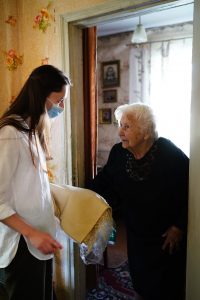
This handkerchief was donated to the Holodomor Museum by Nadiya Fadeivna Ohorodnyk, who was born in 1925 in Kvitneve village (then Zhovtneve) in the Zhytomyr Region. To save themselves, Ukrainians exchanged clothes, household items, and jewelry for food. Nadiya Ohorodnik’s mother, who went to the neighbouring Vinnytsia region, did the same. In the end, almost everything was exchanged for food, except one handkerchief – no one wanted to take it “because it was ugly.” Now this handkerchief is kept in the Holodomor Museum.
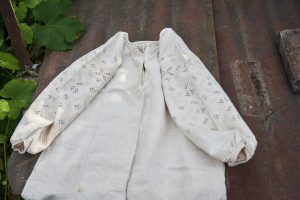
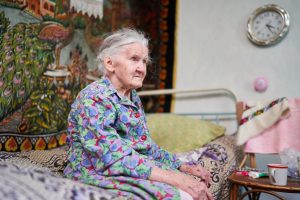
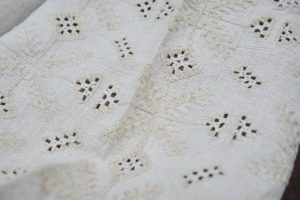
This shirt was embroidered by Agafia Sydorivna Chub from Perekopivka village in the Sumy region in the early 1920s for her wedding. A few years after that, she became seriously ill and died, leaving two children. When the Holodomor began, her husband Avram tried to save his family. He exchanged all his clothes and linen for food, but he could not change his wife’s shirt, whom he loved so much. So it remained in the family as a memory of their mother. Last year, Anna Avramivna, Agafia Chub’s daughter, donated this shirt to the Holodomor Museum.
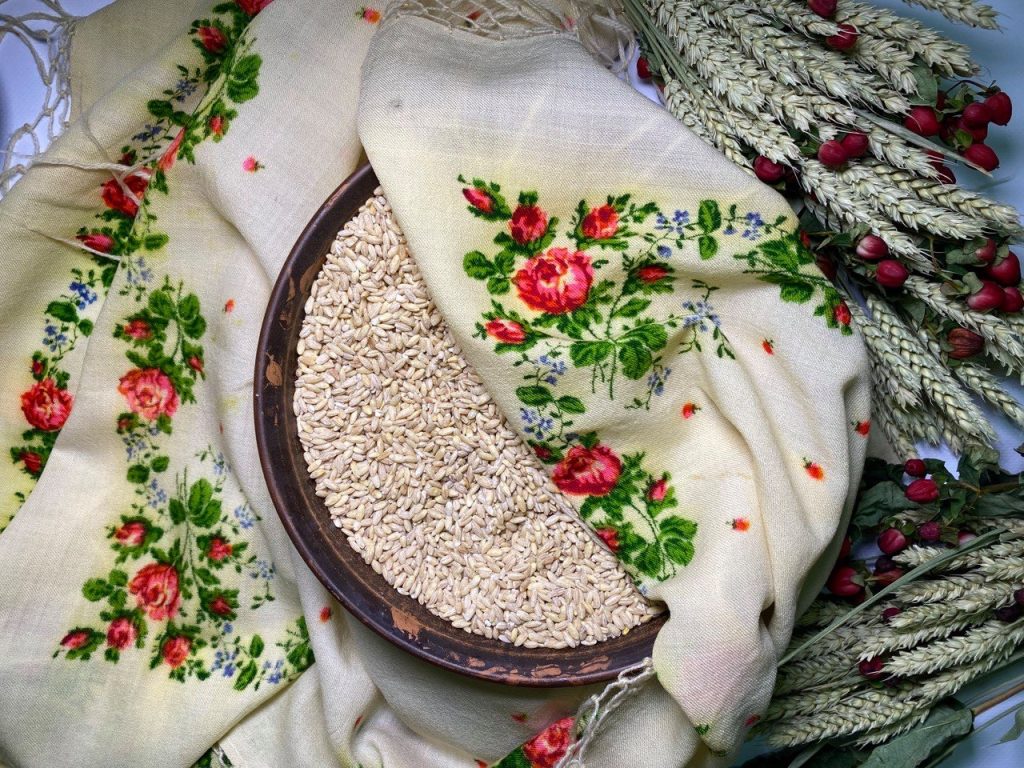
This woolen shawl belongs to Paraskovia Khomenko, who was born in 1927 in Bakyrivka village in the Sumy region. The family was poor – they had no land or livestock, the house was covered with straw, not tiles – but with the beginning of forced collectivization, they were dekulakized because their father refused to join the collective farm. When the family was ousted from the house, the parents tried to take some things with them. Among Khomenko’s property were two expensive handkerchiefs bought at a fair for Paraskovia and her three-year-old sister, Valentyna. The mother hid one of the handkerchiefs in her eldest daughter’s bosom and pushed the child away so that she would not attract the attention of the activists. So that thing was saved. When the National Museum of the Holodomor-Genocide recorded the story of Paraskovia Khomenko, she said that many old things were thrown away over time, but only the memory of the Holodomor did not allow throwing away this handkerchief. Now, this thing is in the funds of the Holodomor Museum.
The stories were recorded as part of the Holodomor project “The Mosaic of History,” embodied by the Holodomor Museum together with Ukrainer with the support of the UCF. The author of the photos is Valentyn Kuzan.
Like 100 years ago, now vyshyvanka is more than a thing. By wearing an embroidered shirt on holidays or in everyday look, we strengthen Ukraine. We reconsider traditions, respect them and integrate them into the modern context. Vyshyvanka Day is probably the most beautiful/fashionable holiday when managers wear an embroidered shirt to the office, children to school, a toddler to kindergarten, or anyone who wants to emphasize their identity on this day through a modern image in embroidery. That is why, we preserve the memory with ancient embroideries, and we continue the tradition with modern ones.
#myvyshyvankamyhistory
Handkerchiefs, letters, embroidered shirts or party tickets, household items, and photos – all these items can become exhibits in the Holodomor Museum and tell about the genocide of Ukrainians around the world. Everything that has a history and a memory is priceless and worth preserving. If you still have things related to the Holodomor, tell us about them by writing to [email protected].
Authors of the project: Holodomor Museum, Vsi.Svoi, Pictoric
